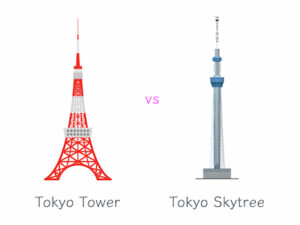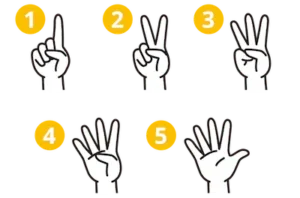
Do You Really Need to Learn Kanji?Kanji: Do You Really Need to Write It? (Focus on Reading)
Friendly, Fluent, and Frustrated with Kanji
When I was teaching a particular international student, I noticed something interesting.
He was friendly and spoke Japanese quite well.
However, he absolutely hated kanji.
His writing assignments were written almost entirely in hiragana.
For Japanese people, reading a text with only hiragana is actually very difficult.
Is Hiragana-Only Writing Hard to Understand?
An Example of Hiragana-Only Writing and Why It Can Be Confusing
Let me give you an example:
「はしのはしをもってあのはしをわたろう。」
Hashi no hashi o motte ano hashi o watarou.
(This sentence is a variation of a pronunciation drill. Japanese announcers use similar phrases to practice speaking clearly.)
When written only in hiragana, it’s hard to understand.
「はしのはしをもってあのはしをわたろう。」
There are three words that sound the same: hashi, hashi, hashi.
How Kanji Clarifies Meaning
But when we write it with kanji:
「箸の端を持って、あの橋を渡ろう。」 “Hold the end of the chopsticks and cross that bridge.”
the meaning becomes clear. (The sentence is grammatically correct. However, it doesn’t carry much real meaning.)
Why Kanji Is Important
In Japanese, many words have the same pronunciation when written in hiragana.Their meanings change depending on the kanji used.
So when students write only in hiragana, readers have to guess the meaning of each word.
However, when kanji are used, the meaning becomes clear right away.
Do I Need to Write Kanji by Hand?
Let me start with the conclusion.
In my opinion, you don’t have to write kanji by hand—at least not always.
If your goal is just to speak Japanese, then writing isn’t necessary.
But if you need to write in Japanese for essays or work,
then being able to write kanji is important.
Why You Should Learn to Read Kanji
I used to tell that student,
“You don’t need to write kanji, but try to learn to read it.”
Why?
Because reading kanji is essential for daily life in Japan.
You will often see kanji in textbooks, signs, ads, and flyers and more.
So what if your goal is just to speak Japanese?
As I mentioned earlier, Japanese written in only hiragana is hard to read.
That’s why being able to read kanji is important—even for speaking-focused learners.
How I Teach Kanji in My Lessons
In my lessons, I use slides and worksheets that are written entirely in hiragana at first.
Then, little by little, I start adding kanji.
Each new kanji comes with hiragana next to it, so you can understand it easily.
Over time, I begin using more kanji without hiragana.
This way, you can build your reading skills step by step.
If you’re looking for lessons that help you read kanji gradually and naturally,
come join one of my classes. I’ll support you at your own pace.
Do you know how to read “向日葵”?
The answer is in my previous article, [What Is This in Japanese?]. Please take a look!
- Word:おかげさま (okagesama) – thanks to you
- Meaning:A polite way to express gratitude to someone for their help.
- Example:おかげさまで元気です。(Okagesama de genki desu.)
(Thanks to you, I’m doing well.) - Fun Fact:It’s common in Japanese to use おかげさま to acknowledge someone’s help politely, often even when they didn’t do anything directly obvious.
◆ Would you like to practice speaking Japanese? ◆
In my lessons, you can use Japanese a lot and learn to speak naturally with me.


親しみやすく、日本語も流暢、でも漢字は苦手
ある一人の留学生を担当していたときのことです。彼は、性格もフレンドリーで日本語をよく話していました。
しかし、彼は漢字が大嫌いでした。日本語の作文は、ほぼひらがなだけです。このひらがなだらけの作文は、日本人にとってとても難しいです。
ひらがなだらけは、難しい?
一つ例文をあげます。
「はしのはしをもってあのはしをわたろう。」
(これは、アナウンサーの発音練習をするときに使う言葉です。それをアレンジしました。)
ひらがなだけだとよくわかりません。
「はしのはしをもってあのはしをわたろう。」
はし、はし、はし、と3つ同じことばがあります。
しかし、
「箸の端を持って、あの橋を渡ろう」
と漢字にすると意味がわかります。(日本語として正しいですが、あまり意味のない文です)
日本語は同じ音(=ひらがな)のことばでも、意味(=漢字)が違うことばがたくさんあります。
ひらがなだらけの作文は、一つのことばを見て、どんな意味なのかを考えなくてはなりません。
しかし、漢字を使ってあると、意味がすぐわかります。
漢字を書く必要はある?
結論から言います。私は「漢字をは絶対に書く」必要はないと考えます。
「日本語を話したい。」という場合は、書けなくてもいいです。
しかし、作文や仕事で日本語の文章を書く必要がある人は「漢字を書く」ことが大事です。
漢字を読むことは?
先ほどの留学生に、「漢字は書けなくても、読めるようになろう」と伝えていました。
なぜなら、日本で生活する上で必ず必要だからです。日本語の教科書、看板、チラシなどを読む機会はとても多いからです。
では、「日本語を話す」ことを目的にしている方は?
最初にお話ししたように、「ひらがなだらけの日本語は読むことが難しい。」ということで、読めることは大切です。
私のレッスンで使うスライドやワークシートは、最初はすべてひらがなです。少しずつ漢字が登場します。その漢字はひらがなも一緒に書いてあります。
そして少しずつ、漢字だけのものにしています。少しずつ漢字を読めるようになるレッスンを心がけています。
「向日葵」読めますか?
答えは前回の記事【What Is This in Japanese?】で紹介しています。ぜひご覧ください。






